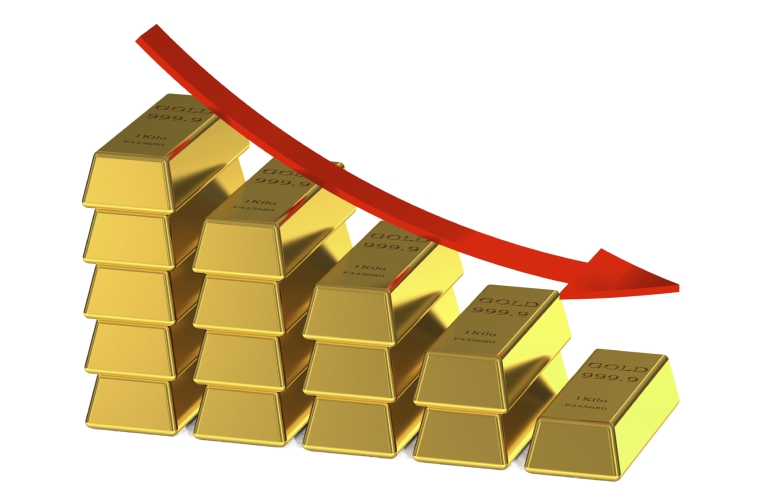
2015 gold demand and supply both suffered from low prices, according to the latest data released by the Gold Council today.
Mine production had its first quarterly decline and its slowest annual growth rate since 2008. Annual gold recycling dropped again, hitting its lowest level since 2007.
With mine production expected to fall in the next year, supply will remain constrained, they said.
Total supply in 2015 fell -4% to 4,258.3 tonnes – its lowest level since 2009 – as mine production contracted and recycling reached multi-year lows in the fourth quarter. Mine production fell -3% in Q4, due to reduced output at a number of large established mines; de-hedging of 15 tonnes further reduced supply available to the market.
On the demand front, the volume of gold used in tech applications shrank further, undermined by weaker sales in the "wireless sector". Losses in the tech sector accelerated throughout 2015: fourth quarter demand of 84.5 tonnes was -7% down year-on-year. As a result, full year demand fell -5% to 330.7 tonnes. Substitution and thrifting were familiar themes, but demand is also now coming under pressure from slowing final product sales in key sectors.
Things are no better among professional investors. Total bar and coin demand expanded only marginally. The pattern of gains and losses at a market level closely followed those in the jewelery space: demand grew in India and the US, while Turkey, Russia and the Middle East all witnessed declines. The only notable exception was the Greater China region, which saw a significant improvement. In terms of year-on-year growth in investment, some context is required as the positive comparison stems largely from exchange-traded fund (ETF) flows being ‘less negative’ than before.
Jewelery demand fell -3% year-on-year, but this masks greater falls everywhere except in India.
The only area that recorded stronger demand was by central banks. This was 40 tonnes higher, capping five consecutive years of strong demand. But that in turn masks the fact most demand is by states with troubled economies, particularly Russia. China was also a big buyer along with Kazakhstan. Some other traditional buyers actually became sellers in 2015, including Columbia and El Salvador.
No OECD countries feature as buyers although Germany featured as a big seller (3.2 tonnes).
You can find current prices for gold here. Scrap reference prices are here.
Sign up for our weekly precious metals newsletter here. It is free.
Precious metals
Select chart tabs
12 Comments
Today equity markets are tanking and gold has had a spectacular leap, up US$60/oz to US$1,250/oz.
....looks like AndrewJ's vid post was on the money ....
Gold has broken all downtrend lines today on its biggest volume in history....ASX gold miners are up 5-10%.
The gold/oil ratio has now at an all-time high, has just taken out the 1892 high of 41. Spikes in this ratio have happened in times of crisis.
Do you follow gold because your are trading or because you using it as a store of value?
Store of value.
Then you are probably also aware of ANOTHER and FOFOA... :)
Thanks for reminding me, this was a few years ago now. Things are looking good for the Aussie gold miners as diesel one of their biggest costs has come down with the oil price crash yet the price of gold in $AUD is close to its all time high, meaning margins are pretty massive considering typical AISC all-in sustaining cost of $A1,100/oz, meaning a +50% margin at gold $A1,700. The ASX.XGD index is up 60% over the last six months yet still only at 40% of its ATCH all-time closing high five years ago.
.... possibly the worst timed article for 2016.
I was thinking the same.
The term "De-Hedging". Is this a reference to the "Paper- Gold" sector thats getting laid to rest? Basically it became a market in paper promises for gold that couldn't deliver when the demand for gold peaked a few years ago and nations who had there gold in storage in the US weren't allowed to audit their own gold.
only gold is money everything else is credit...

We welcome your comments below. If you are not already registered, please register to comment.
Remember we welcome robust, respectful and insightful debate. We don't welcome abusive or defamatory comments and will de-register those repeatedly making such comments. Our current comment policy is here.